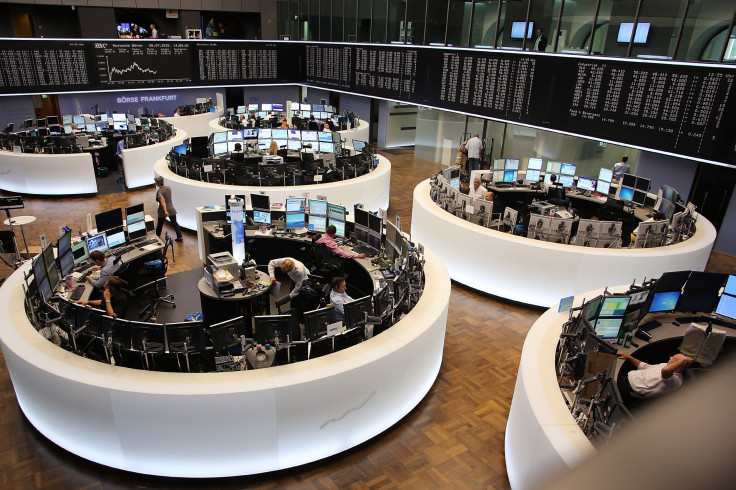Selloff Gathers Pace As Stimulus Pullback Fears Deepen

European stocks and bonds fell in a volatile market on Monday, hit by growing concerns that global central banks' commitment to the post-crisis orthodoxy of super-low interest rates and asset purchase programs may be waning.
German Bund yields rose further above zero to 0.04 percent, their highest since Britain's Brexit vote in late June, and the rise in lower-rated euro zone countries' yields was even sharper.
Major European stock indexes fell as much as 2 percent in early deals, putting them on course for their biggest losses since June, and Wall Street futures pointed to a fall of 0.7 percent at the open.
Trade was driven by revived prospects of the U.S. Federal Reserve hiking rates next week, and concerns that the European Central Bank and the Bank of Japan may be slowing their monetary policy easing efforts.
"It's a pretty broad-based sell-off on an increasing view that perhaps central banks are going to draw back from providing ever more easing," said RBC European economist Cathal Kennedy.
"The BoJ and the ECB ...are questioning the effectiveness of their own policy. Add to this an increasing probability that the Fed will raise rates sooner rather than later."
Earlier, Asian shares suffered their sharpest setback since June as investors were rattled by rising bond yields and talk that U.S. rates might rise as early as next week.
The selloff there also followed reports that the Bank of Japan may look to steepen the Japanese yield curve at a policy review this month, with markets worried that, if it goes down that path, tapering buying of long-dated bonds may be among the options.
Super-low bond yields have made returns on equities seem relatively more attractive, so any sustained climb in yields would likely weigh on stock valuations.
Some Fed members have been talking up the September meeting as being "live" for a rate hike, even though futures only imply a one-in-four chance of a move then.
Three more Fed officials are expected to speak later on Monday, including board member and noted dove Lael Brainard, and any hint of hawkishness would likely further pressure bonds and equities.
"Market participants are wondering if maybe she (Brainard) is being wheeled out to give the market one last warning of a rate hike at next week's meeting," said Marshall Gittler, head of research at broker FXPRIMUS.
"The thinking is that if someone as dovish as she is starts talking like a hawk, people will notice. Her speech will be closely examined."
Such risks led Wall Street's fear gauge, the VIX index, to its highest close since late June on Friday. The Dow shed 2.13 percent on Friday, while the S&P 500 lost 2.45 percent and the Nasdaq 2.54 percent.
SEEKING SAFETY
In the forex market, the risk aversion benefited perceived safe havens such as the yen while hitting carry trades in higher yielding currencies including the Australian dollar.
The Aussie has lost 1.75 percent against the yen in two sessions to stand at 76.94, while the Japanese currency was firm on the U.S. dollar at 102.27.
The euro rose slightly against the dollar to $1.1253 after weak German trade data dragged it down on Friday from a high of $1.1285. The dollar index, which tracks it against a basket of six currencies, eased fractionally to 95.184.
Adding to the jittery mood on Monday was news that Democratic candidate Hillary Clinton fell ill at a Sept. 11 memorial ceremony and had been diagnosed with pneumonia.
Markets have generally assumed Clinton would win the presidency and have not truly considered the implications, both economic and for national security, should her rival Donald Trump prevail.
Political concerns had already been inflamed by North Korea's fifth and biggest nuclear test, ratcheting up a threat that its rivals and the United Nations have been powerless to contain.
North Korea has completed preparations for another nuclear test, South Korea's Yonhap News Agency reported on Monday, citing South Korean government sources.
Oil prices extended Friday's 4 percent fall in Asia after reports showed increasing drilling activity in the United States, indicating that producers can operate profitably around current levels and bring on new supply.
Brent crude was off 47 cents, or about 0.98 percent, at $47.54 a barrel, while U.S. crude lost 59 cents to $45.27.
© Copyright Thomson Reuters 2024. All rights reserved.







